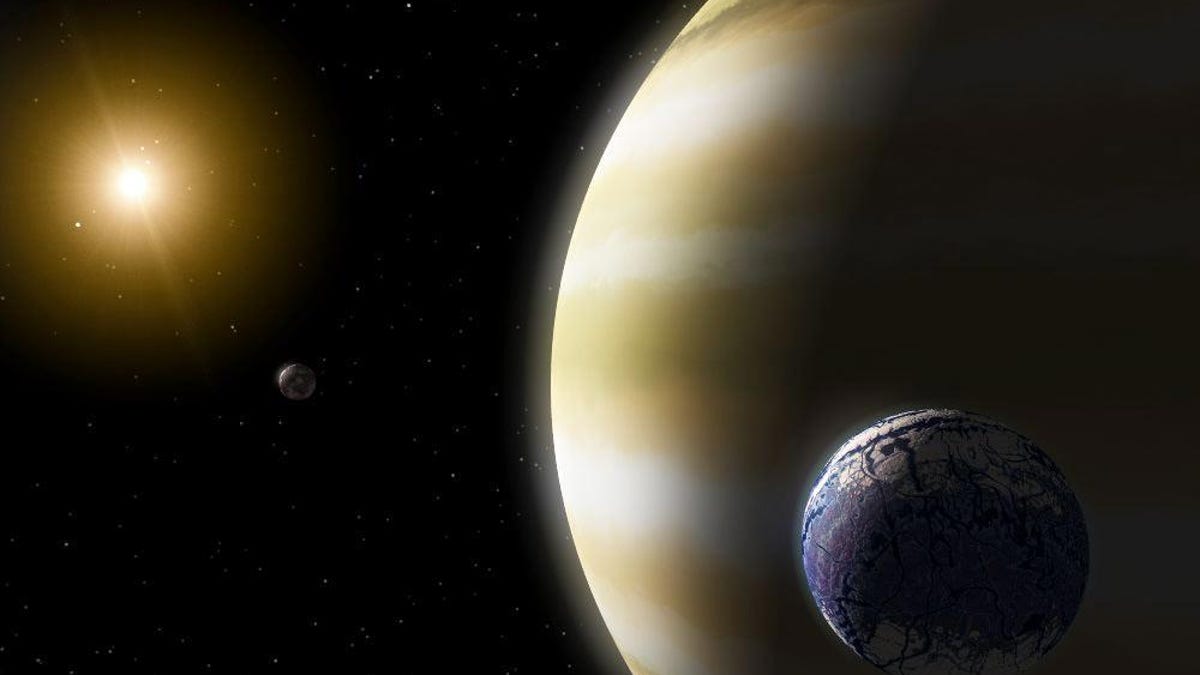Strange, giant exoplanet could be the best place to look for livable exomoons
A Saturn-size world not too far off is worth another look. Or many more looks.

Artist's rendition of an Earth-like "exomoon" orbiting a gas giant planet in a star's habitable zone.
Astronomers have taken a close look at a Saturn-size exoplanet and found it may have temperatures similar to Earth. While it's not likely the nearby exoplanet is habitable, there's a chance it might have perfectly livable exomoons.
The exoplanet,"HIP41378 f," is the outermost of six observable worlds orbiting the star HIP41378, which is an F-type star roughly 10% hotter than our own sun. Situated some 336 light years from Earth, it's just around the corner from us, galactically speaking, but still far enough that we're not getting there anytime soon without a warp drive or some other new technology ripped from the pages of science fiction.
A new paper by an international team of astronomers details the scientific opportunities presented by this rare gas giant exoplanet orbiting in the habitable zone. Because larger planets are easier to study with telescopes, HIP41378 f could be helpful to scientists looking to study the atmospheres of distant worlds and also test global climate models used for Earth and planets in our solar system.
"This planet is likely composed of a large atmosphere dominated by hydrogen and helium and a very small core," reads a draft of the paper, which has been submitted to Nature Astronomy but hasn't yet been peer-reviewed. "Such a low-density planet... is not predicted by the current formation and evolution models of exoplanets and it will be a challenge for such models to explain its history."
It is, with current models, a bizarre world. However, the astronomers write it could be the presence of rings around the planet which make it appear larger than it actually is, giving it a lower density measurement than expected.
"Another explanation is that HIP41378 f is a "super-puff" planet with an extended, outflowing atmosphere," they note.
Super-puff or not, the team argue the world will be a prime target for next generation telescopes like NASA's upcoming James Webb Space Telescope or the European PLATO mission to check out.
"Although this large, gaseous planet is not likely to be habitable, it might host habitable exomoons... (It is) one of the best planets to search for habitable exomoons."
At this point exomoons are still hypothetical. Astronomers think they may have spotted a few, but those observations have yet to be fully confirmed. As we now believe there to be billions or trillions of planets in the universe it seems reasonable to think a number of them have their own satellites.
Now we have another place to move to the top of the list of worlds to check for moons worthy of a 23rd or 24th century vacation.

